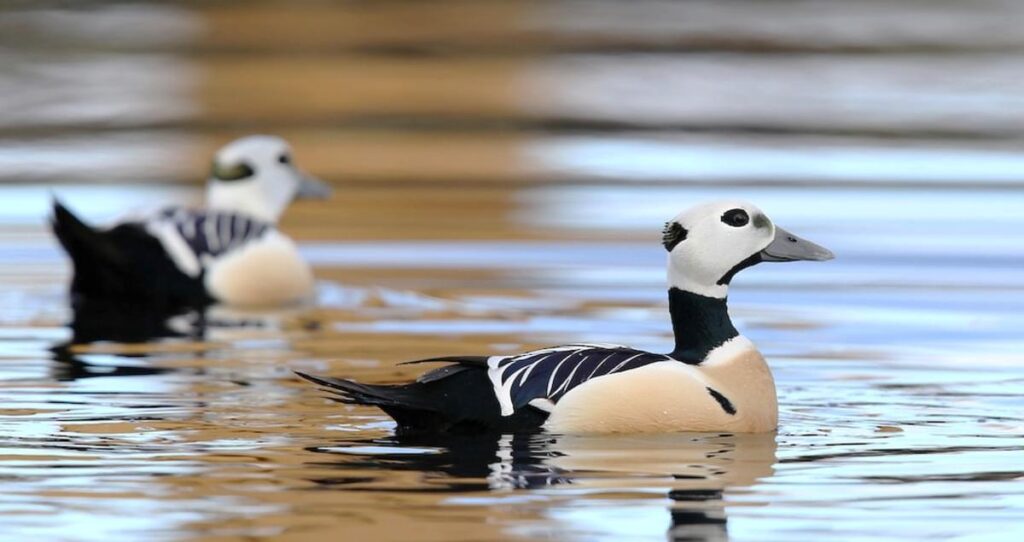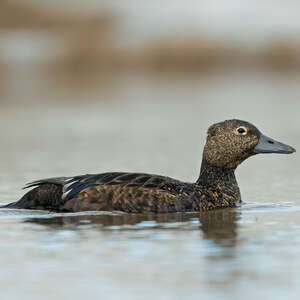Steller’s Eider


Scientific Name
Polysticta stelleri
Measurements
| Feature | Measurement |
|---|---|
| Length | 43–46 cm (17–18 in) |
| Weight | 800–860 g (1.8–1.9 lb) |
| Wingspan | 69 cm (27 in) |
| Wing | 21–22.5 cm (8.3–8.9 in) |
| Culmen | 3.7–4.2 cm (1.5–1.7 in) |
| Tarsus | 3.6–4.0 cm (1.4–1.6 in) |
Status
Steller’s Eider is listed as Vulnerable by the IUCN. The Alaska-breeding population is Threatened under U.S. law due to a dramatic decline in nesting sites and ongoing habitat threats. Conservation and recovery plans are active in both the U.S. and Europe.
Identification
The smallest and fastest of all eiders, Steller’s Eider is a compact sea duck with a large head and thick bill. Breeding males are striking—white-headed with a black cap, cinnamon breast marked with a black spot, and green patches behind the eyes. Females are brown with pale eye-rings and a purplish-blue speculum edged in white.
Voice
Males produce low growling or crackling sounds, while females give soft “qua-haaa” calls. Their flight feathers also emit a whistling sound in flight.
Diet
Feeds mainly near shore on crustaceans, mollusks, polychaete worms, and mussels. During the summer, it eats aquatic insects and plant material such as pondweeds and berries.
Distribution
Breeds along Arctic coastlines of Alaska and Russia and winters in the Barents, Baltic, and Bering seas. Small numbers are also found in northern Norway.
Habitat
Favors marshy tundra for nesting, building nests on slightly raised mounds covered with mosses and grasses near small ponds. Winters in shallow coastal lagoons and bays rich in eelgrass and invertebrates.
Breeding
Pairs form in late winter or early spring. The female builds a grass- and down-lined nest and lays 1–8 olive to brownish-orange eggs, which she incubates for about 25 days. The young hatch with down and feed themselves but stay near the mother until fledging.
Molt
After breeding, Steller’s Eiders gather in dense flocks in Arctic lagoons to molt all their feathers at once, remaining flightless for about three weeks. The molt season runs from July to October.
Conservation
Protected under international law, Steller’s Eiders are part of recovery programs led by the U.S. Fish and Wildlife Service and the European Union. Critical habitats have been designated across Alaska. The global population is estimated at 110,000–125,000 individuals.
